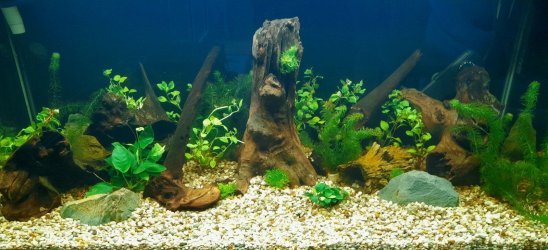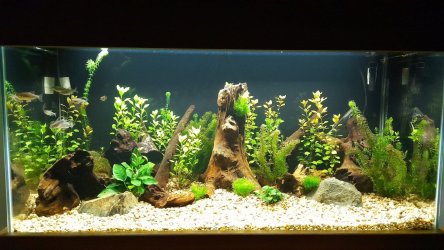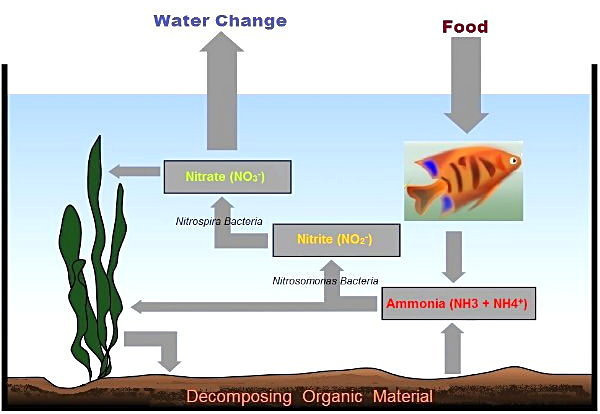Tony_W
New Member
Hi, started keeping finish many years ago as a teenager, now in my 50's I've decided to start again with a 200ltr / 50gallon tank.
In 40 years the florescent tube lighting and under gravel filtration seem to be things of the past. Now it's LED lighting and external cannister filters.
The tank has been set up now for 3 weeks.
I have added a water conditioner, plant feed and done 2x 20% water changes a week a part.
Started testing the water after 2 weeks.
During the last week, Ammonia has always tested 0, Nitrite dropped from 5ppm to 0, and Nitrate went up from 10ppm to 20ppm.
I assumed it is cycling OK and introduced my 1st fish today, 9 Congo Tetra. Have I done this too soon?
Plants seem to be growing OK, the 2 pictures attached are taken 9 days apart.
Looking forward to getting advice and contributing
In 40 years the florescent tube lighting and under gravel filtration seem to be things of the past. Now it's LED lighting and external cannister filters.
The tank has been set up now for 3 weeks.
I have added a water conditioner, plant feed and done 2x 20% water changes a week a part.
Started testing the water after 2 weeks.
During the last week, Ammonia has always tested 0, Nitrite dropped from 5ppm to 0, and Nitrate went up from 10ppm to 20ppm.
I assumed it is cycling OK and introduced my 1st fish today, 9 Congo Tetra. Have I done this too soon?
Plants seem to be growing OK, the 2 pictures attached are taken 9 days apart.
Looking forward to getting advice and contributing





